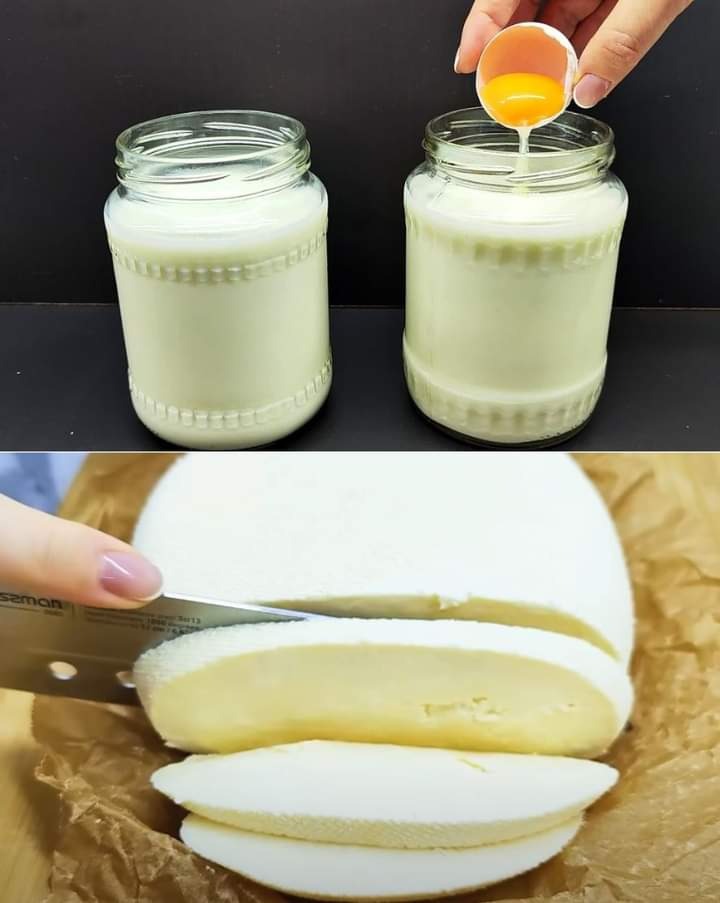- Heat the Milk:
- Pour the milk into a large pot and heat it over medium heat.
- Stir occasionally to prevent the milk from scorching on the bottom.
- Heat the milk until it reaches about 190°F (88°C). You’ll see it starting to steam and small bubbles will form around the edges.
- Add the Acid:
- Remove the pot from the heat.
- Add the white vinegar or lemon juice to the milk, stirring gently for about 1 minute. You should see the milk begin to curdle, with the curds (solid) separating from the whey (liquid).
- If the milk doesn’t fully curdle, add a little more vinegar or lemon juice.
- Let it Sit:
- Allow the mixture to sit undisturbed for about 10 minutes. This helps the curds and whey to separate completely.
- Strain the Curds:
- Line a fine mesh strainer with cheesecloth or a clean kitchen towel and place it over a large bowl.
- Carefully pour the curdled milk mixture into the strainer, allowing the whey to drain away. You can gently stir the curds with a slotted spoon to help with the draining.
- Rinse and Season:
- Once the whey has drained, rinse the curds under cold water to remove any excess acid. This also helps to cool the cheese.
- If you’re making paneer, gather the cheesecloth and squeeze out excess liquid. For ricotta, you can leave it in the strainer to drain further.
- Sprinkle the cheese with salt if desired, and mix gently.
- Press and Shape (Optional):
- For paneer, fold the cheesecloth over the curds, place the bundle on a plate, and weigh it down with a heavy object. Press for about 30 minutes to firm up the cheese.
- For ricotta, you can use it immediately or refrigerate it to firm up slightly.
- Store:
- Transfer the cheese to an airtight container and refrigerate. Fresh cheese should be consumed within a week.
Tips:
- Milk Quality: Use the best quality milk you can find for the best results. Avoid ultra-pasteurized milk as it may not curdle properly.
- Acid Choices: Vinegar and lemon juice both work well, but they impart slightly different flavors. Lemon juice gives a milder taste.
- Cheese Texture: If you want a firmer cheese, increase the pressing time. For a softer texture, skip the pressing step.
Variations:
- Herbed Cheese: Mix in fresh herbs like basil, chives, or dill after straining for a flavorful twist.
- Spiced Cheese: Add spices such as black pepper, cumin, or paprika for a different flavor profile.
- Ricotta Variations: For a creamier ricotta, mix in a little heavy cream after straining.
Is there a specific type of cheese you’re interested in making or any other questions about the process? Let me know, and I can provide more detailed instructions or different cheese recipes!
